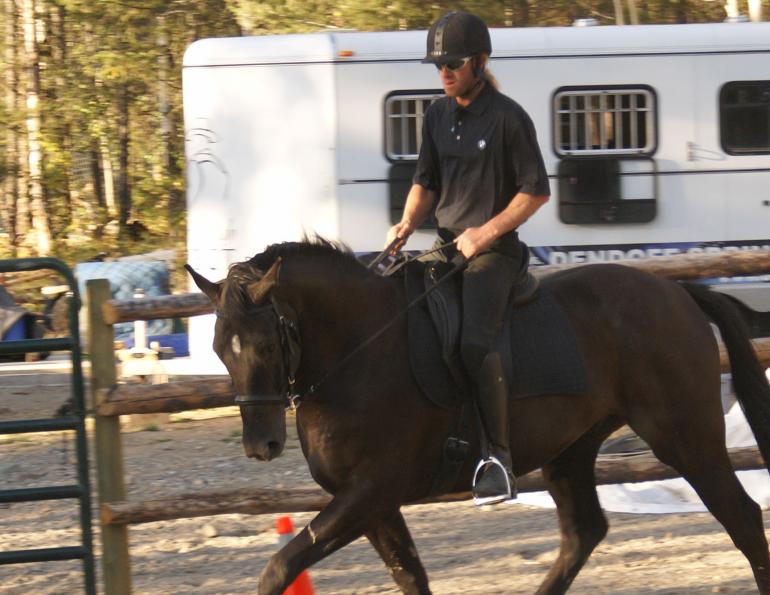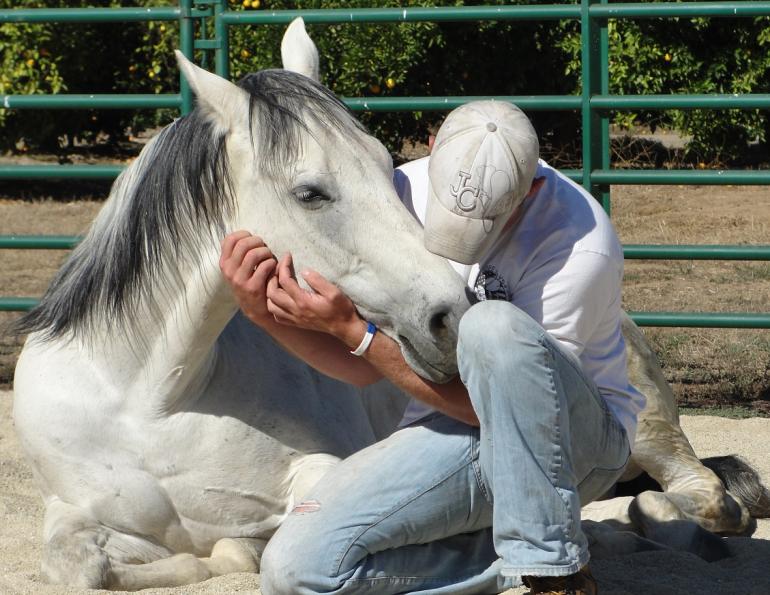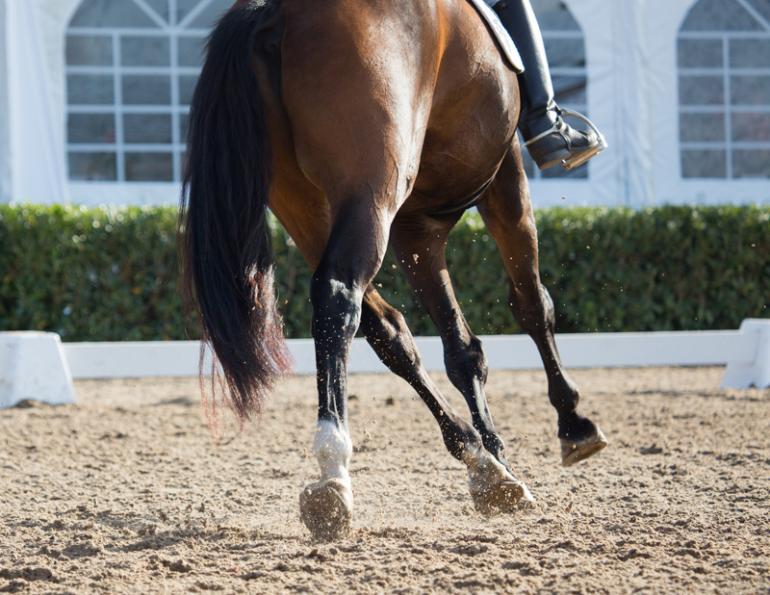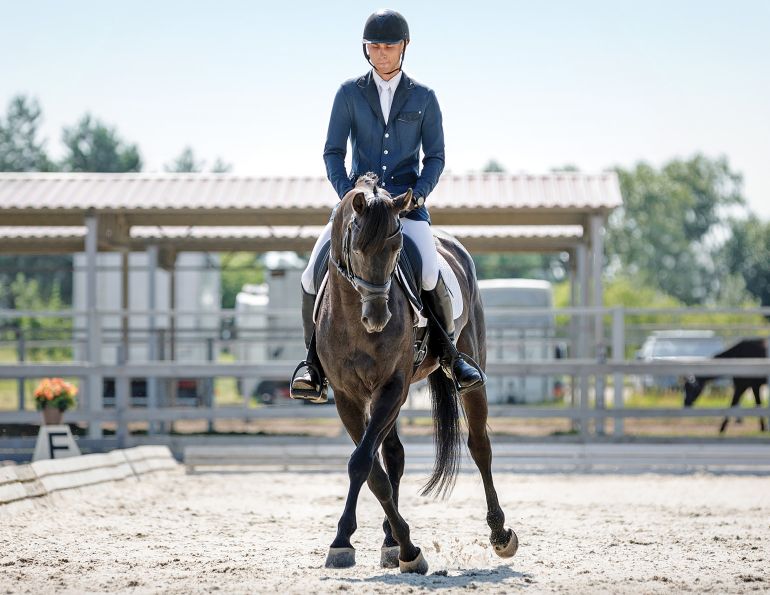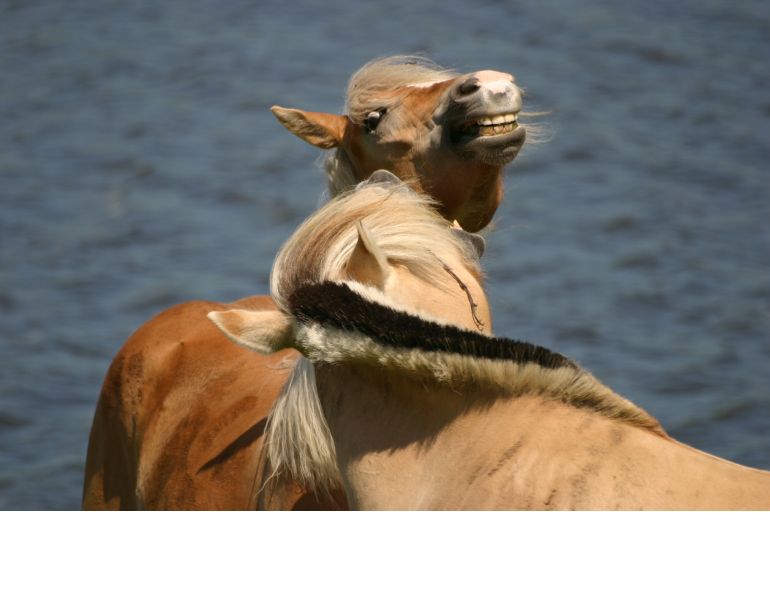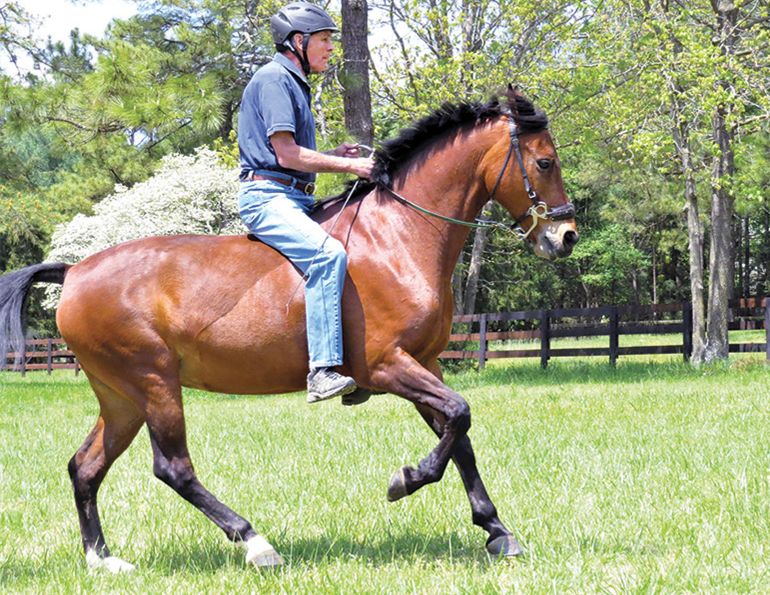By Will Clinging
When working with a green horse, progress is not always consistent. The horse will plateau as he becomes confident in performing what he has been taught. The amount of progress we expect from the horse, and his physical and mental ability to handle increased expectations for performance, will be major factors in how quickly he improves. There are times when the horse can scare himself by doing something he did not fully understand. Movement can become bigger or faster than the horse is capable of handling with his current level of training. His own power can get away from him and send him out of control. Compare it to learning how to drive a grand prix race car; an uneducated driver will not know how to handle the speed and sensitivity of the car, and will likely be out of control.
Riding a green horse should not be taken lightly. It is very easy to get beyond comfort level of both horse and rider. Patience and preparation are very important to ensure every ride is successful. Success is a relative thing and should not yet be measured by correctness or performance. Success is building confidence and encouraging the effort to perform. Improvement is inevitable with effort, support and patience.

Patience and preparation are very important to ensure that every ride is successful. Photo: Shauna Clinging
In practical terms, when working a green horse from the ground I am preparing him for what I will ask of him later when riding in the lesson. I try not to jump too far ahead and teach maneuvers which he does not have the tools to perform successfully every time. For example, if the horse has been ridden only a few times, I am still working at the walk. Eventually I want a comfortable canter. By concentrating only on the canter and overlooking more fundamental skills, I may be able to get the horse to canter before he is prepared properly, but the canter will not be of good quality. The departure won’t be smooth, he may scare himself because he is off balance, and I won’t be able to steer or stop him, all because I overlooked the development of the confidence and skills he needed to canter. The horse will also develop tension and anxiety while being ridden because he was not prepared for what happened.
If I develop a nice forward walk, and work on the skills he needs to trot, then the transition to trot will be easy. The same is true from trot to canter. When he is forward, soft, and straight, with comfortable transitions from walk to trot and back to walk, then canter is just around the corner.

The horse’s power can get away from him and send him out of control. Photo: Shauna Clinging
With the horse on the longe line, I evaluate the quality of movement in preparation for an increase in movement. In the early lessons I taught the horse to longe in a basic way. The introduction of side-reins and the concept of contact and straightness make the longing more difficult. I encourage mechanical correctness as much as possible, and evaluate the comfort in the movement more than the quality. If the transition from walk to trot is comfortable, and he is comfortable maintaining the trot, then I will ask for canter.
If things fall apart and he starts to race or bulge out or drop in excessively on the circle, then the canter needs some work. I think to myself, “Would that canter feel comfortable to ride?”
If my answer is no, I will not ask him when we are riding to do something he cannot do when on the longe line.
Each ride should build on the last, and lead to the next. I may work on the trot on the longe line for a couple of weeks before I ask for it under saddle. I should be able to give a specific aid and get a consistent response. Then, when under saddle, I know what to expect from the horse and am more likely to get a comfortable departure with a calm, relaxed trot. It is much more important to have that consistence when going to canter.
There should be no guesswork if you want to have things work out as you hoped. Actually, if you are “hoping” it will work, I will bet the horse is not ready. You should KNOW the horse is ready. This is a lesson I learned the hard way. Teaching the quality in movement on the longe line, however slow, is faster and safer than weeks or months of trying to teach it to a scared horse after things have gotten out of control.



